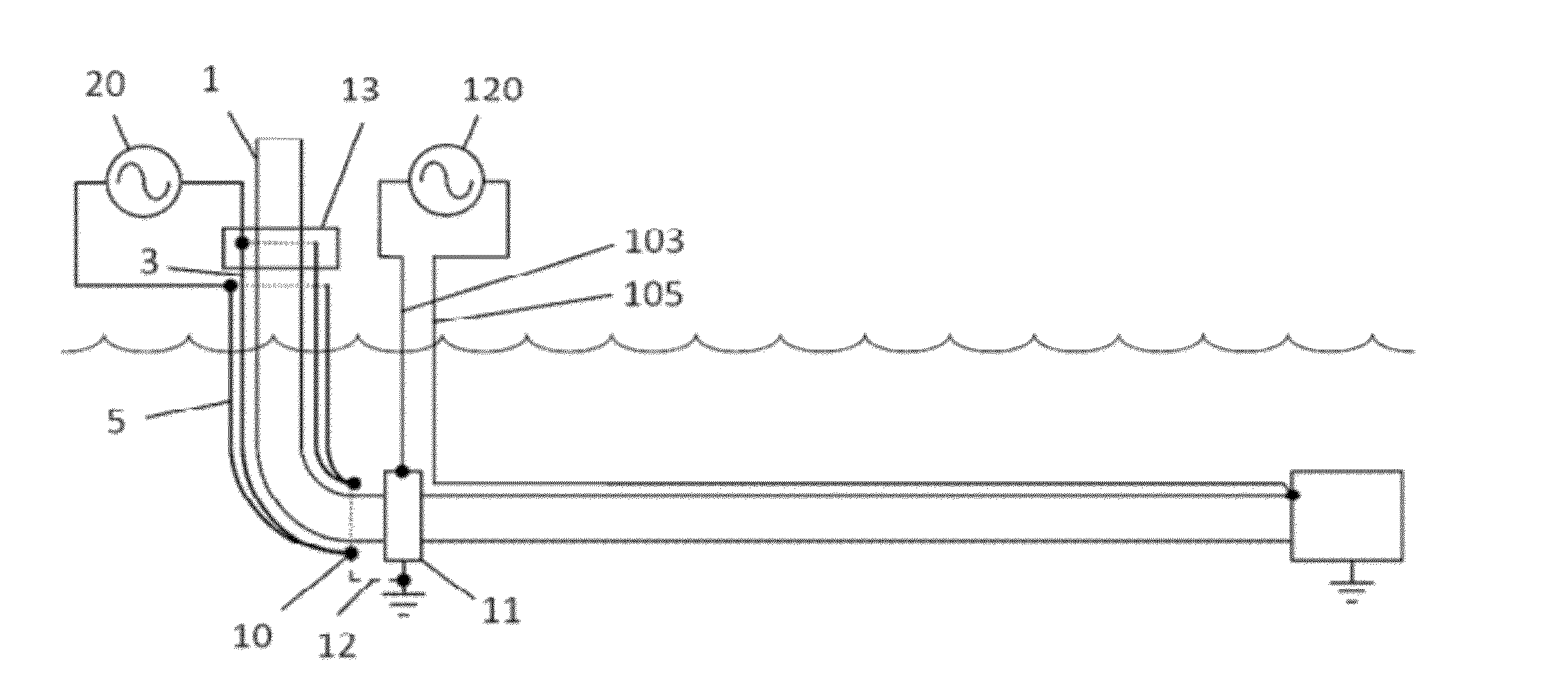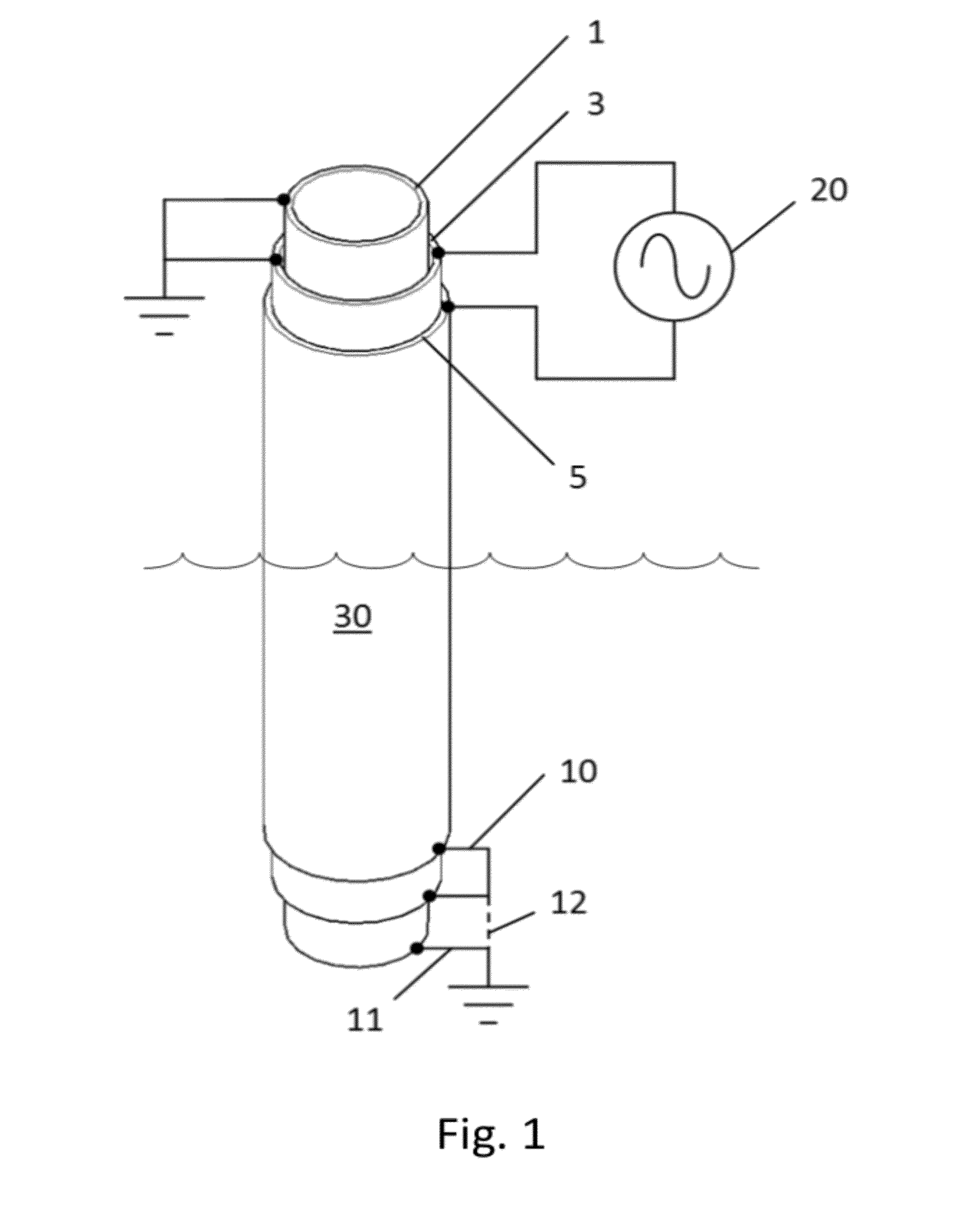Low-voltage direct electrical heating lvdeh flexible pipes risers
a technology of flexible pipes and low-voltage direct electrical heating, which is applied in the direction of pipe heating/cooling, insulation, borehole/well accessories, etc., can solve the problems of large electrical stray current in sea water, difficult control, cost and safety problems, etc., and achieve the effect of reducing the electrical curren
- Summary
- Abstract
- Description
- Claims
- Application Information
AI Technical Summary
Benefits of technology
Problems solved by technology
Method used
Image
Examples
Embodiment Construction
[0030]Referring to FIG. 3 and to FIG. 1 there is shown a schematic illustration of a section of a pipeline that is heated with a LV-DEH system. An alternating current (AC) is introduced from a current source 20 supplying a fixed frequency, typically within a range extending from 50 Hz up to several kHz, to an upper side of a concentric conductor comprising copper or steel wires 5 acting as a forward cable. This conductor comprises at least one layer of wires. The current flows downwards to a patch connection 10 where this forward cable is connected to the steel armour wires 3 acting as a return path for the electrical current. This patch may optionally be grounded through a patch connection 12. The steel armor wires 3 are terminated in a topside termination 13 which is also connected to the topside or onshore structure and is therefore grounded. This termination 13 concludes the return path of the current to the current source 20.
[0031]Referring to FIG. 2 the pipe 1 of the riser 30 ...
PUM
 Login to View More
Login to View More Abstract
Description
Claims
Application Information
 Login to View More
Login to View More - R&D
- Intellectual Property
- Life Sciences
- Materials
- Tech Scout
- Unparalleled Data Quality
- Higher Quality Content
- 60% Fewer Hallucinations
Browse by: Latest US Patents, China's latest patents, Technical Efficacy Thesaurus, Application Domain, Technology Topic, Popular Technical Reports.
© 2025 PatSnap. All rights reserved.Legal|Privacy policy|Modern Slavery Act Transparency Statement|Sitemap|About US| Contact US: help@patsnap.com



